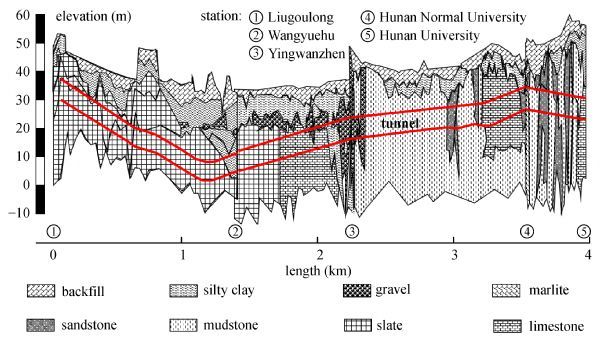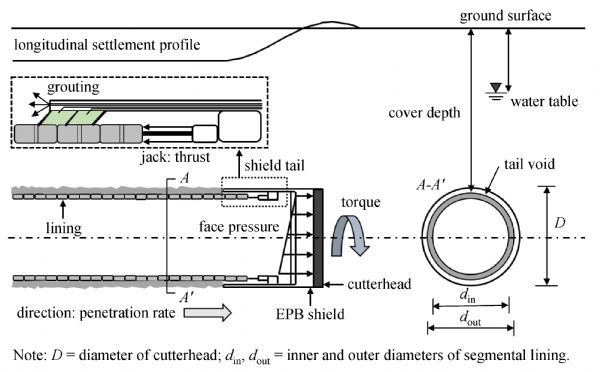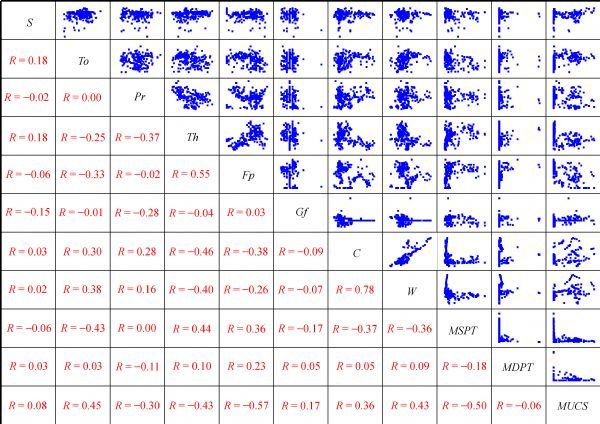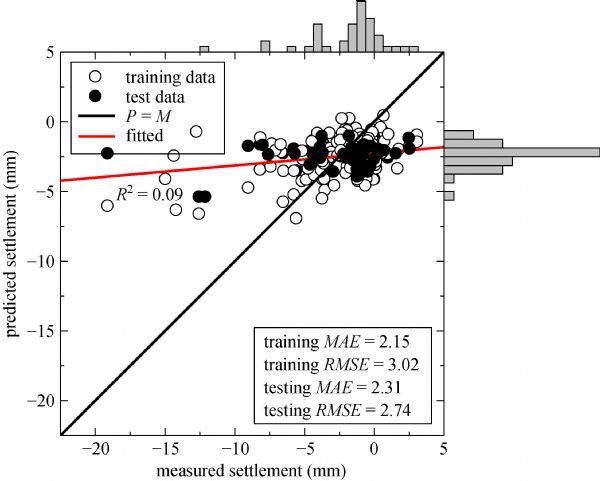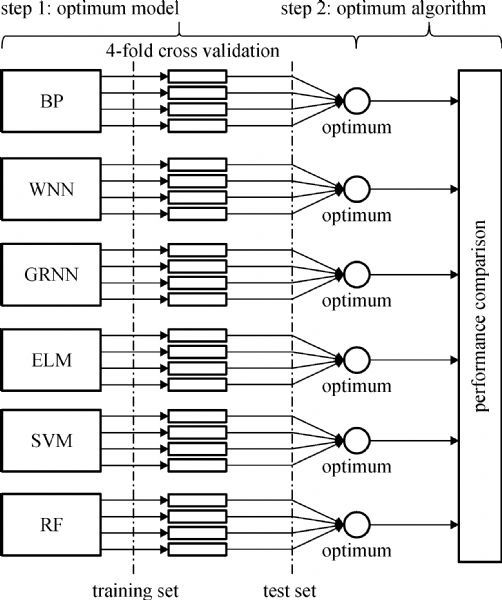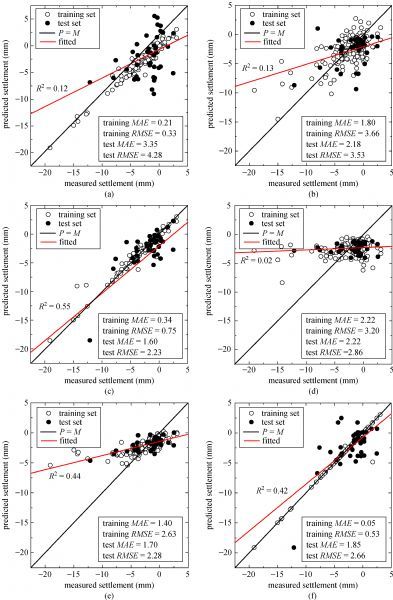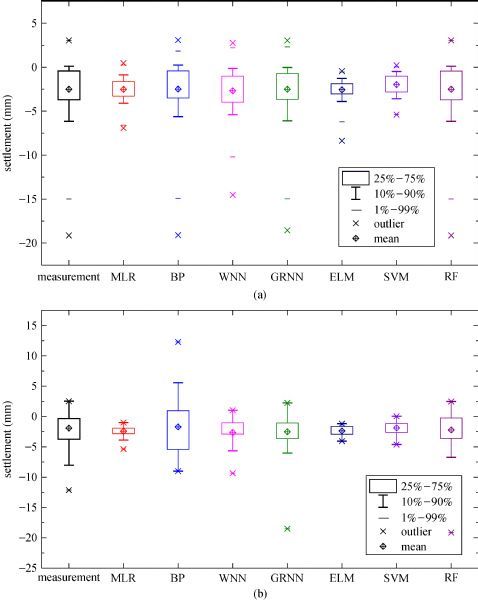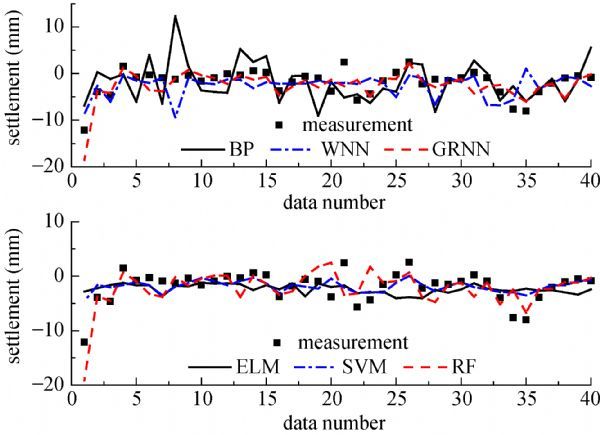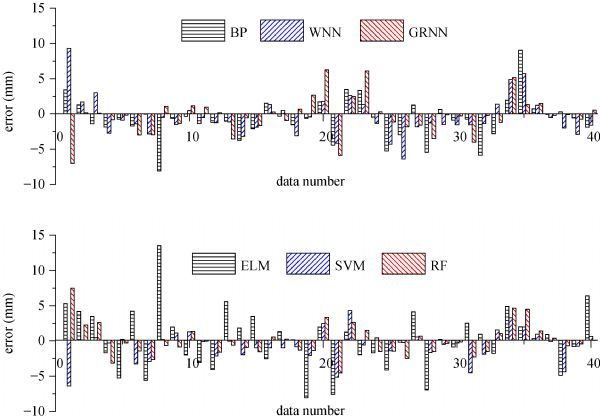The increasing traffic pressure in cities of China has led to a large number of metros being built [
1–
5]. The metro tunnels are generally constructed by shield method due to its advantages of high speeds, minor disturbance to the surface traffic, etc. [
6,
7]. During construction of the shield tunnels, ground settlement will be inevitably caused due to disturbance to the soil layers around tunnels and the volume loss of the tail void, which may pose a risk to the surrounding infrastructures [
8–
12]. To predict tunneling-induced ground settlement, many endeavors have been made, e.g., to propose empirical formulae [
13–
15], analytical solutions [
16,
17], or to conduct elaborate numerical simulations [
18–
20]. However, these methods still have many limitations, e.g., inapplicable to complex ground conditions and construction techniques [
21], difficult to identify the parameters of the sophisticated soil constitutive models, hard to model the tunnel construction process [
22,
23], etc. In the past few decades, ML has become strong tool to solve nonlinear problems with high dimension [
24–
26], since these algorithms can effectively capture the nonlinear relationship among the influential factors with less exertion. Some of these algorithms are able to achieve the transformation of parameters space, which prompts to find out the nature of the problems [
27,
28].



